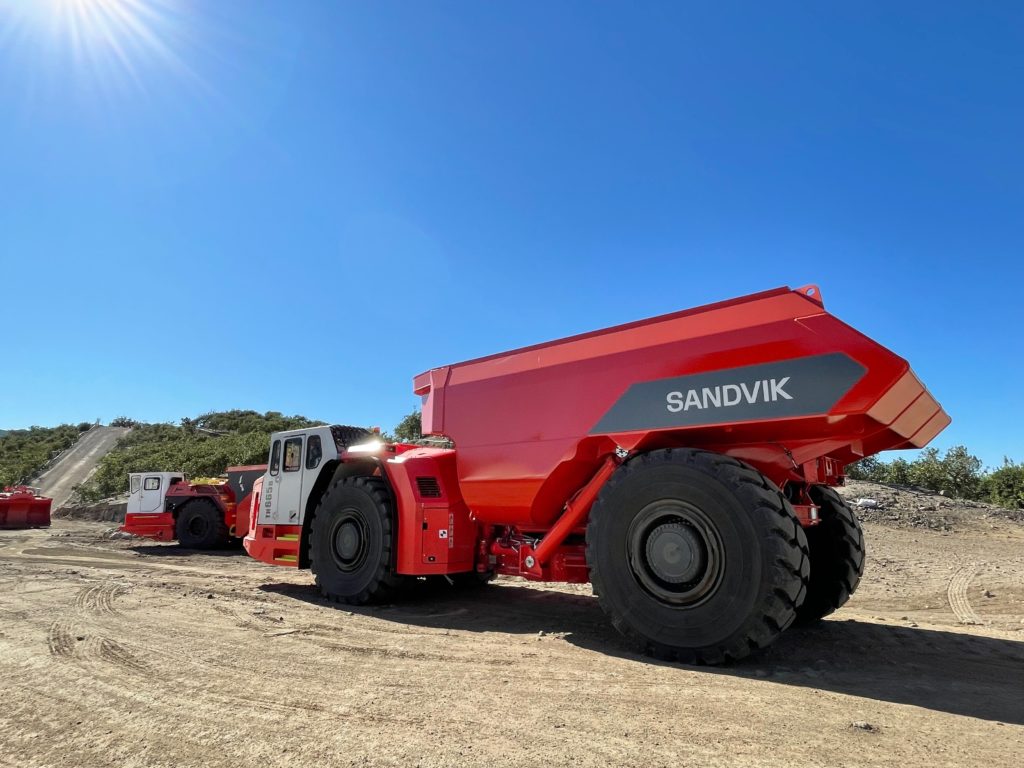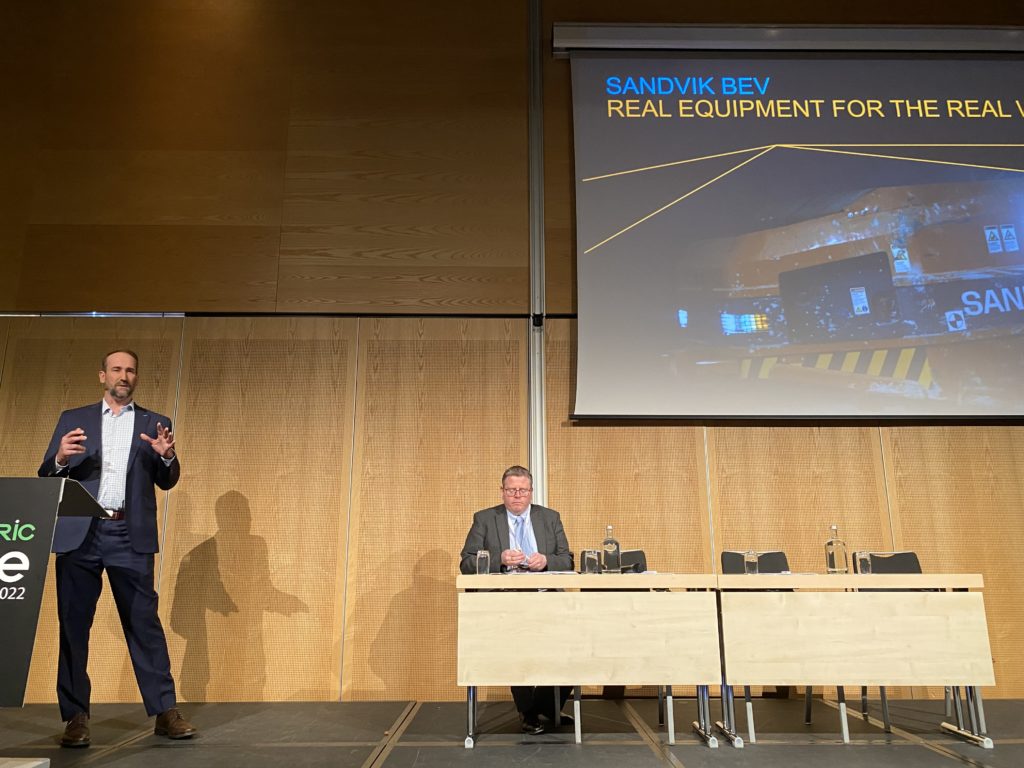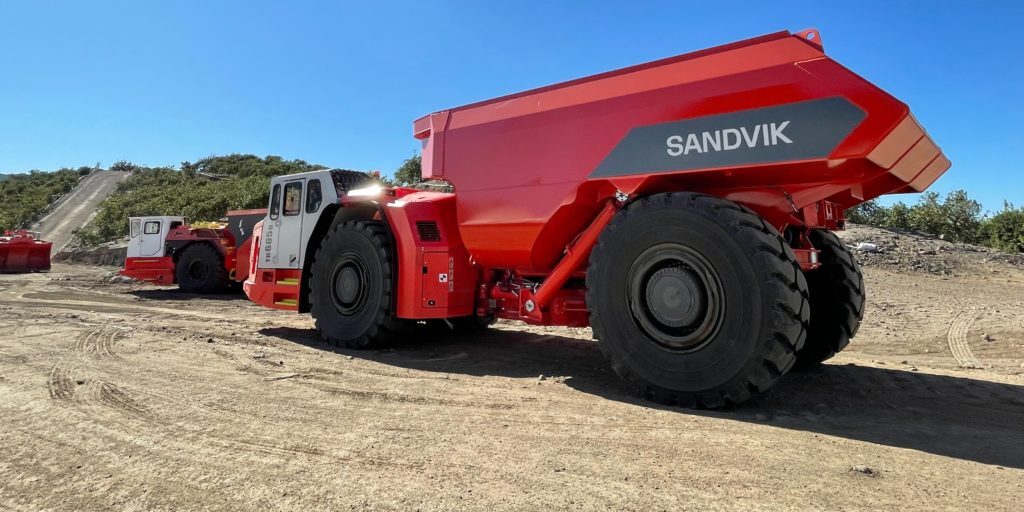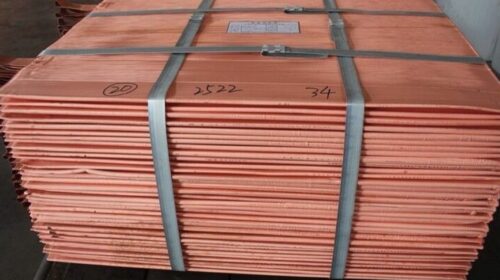Sandvik outlines its emission-free mining journey at The Electric Mine 2022
Sandvik Mining and Rock Solutions President, Henrik Ager, got The Electric Mine 2022 Conference in Stockholm, Sweden, off to a bang earlier this month, with a major product reveal that will set a new benchmark in the battery-electric underground mining space.
After reflecting on a journey that saw him escape a broken lift on his way to the Radisson Waterfront that morning, Ager announced the company would soon release the largest-capacity battery-electric truck for underground mining to the market, the TH665B.
With a 65-t-payload capacity, this machine will be measured against the largest underground diesel-powered underground trucks for productivity, speed and cost. Interest is expected from major contractors and miners alike, with one of the bigger markets being the Australian underground hard-rock segment.
The prototype TH665B is currently completing factory testing, but it turned heads in Stockholm, with conference attendees witnessing a video of the machine in action on the company’s test track in California, USA.
Blending proven Sandvik design and advanced technology built around electric drivelines and battery systems, the TH665B will get its first mine site runout at AngloGold Ashanti’s Sunrise Dam gold mine in Western Australia. This trial is expected to prove its viability in a long ramp haulage application before commercial truck production commences in late 2023.

While displaying said video, Ager said the vehicle could haul a 65-t load up a 14.3% grade at 11.5 km/h. This, he said, was 30% faster than Sandvik’s 63-t diesel truck, the Toro TH663i, with which the TH665B shares a state-of-the-art cabin. An electric drivetrain that delivers 640 kW of continuous power, which equates to 858 horsepower, and significant torque, is behind such numbers.
Following the introduction of the Sandvik TH550B 50-tonne battery-electric vehicle at MINExpo INTERNATIONAL® 2021, last September, this latest vehicle launch shows, once again, how the company is betting big on its battery- and hybrid-electric loaders tackling the challenge of operating underground mines today and tomorrow.
Ager at the event outlined the three main drivers for the electrification move, namely: worker health, mine economics and sustainability. Sandvik’s battery-electric solutions, he said, hit all three criteria, providing safer, more productive and sustainable ways of moving the tonnes the industry needs to keep up with global commodity demand.
The primary driver for electrification came from ventilation and refrigeration constraints, followed closely by environmental, health and safety concerns over diesel exhaust emissions. At the same time, Ager said there was significant room for operating costs to fall with the adoption of battery-electric equipment given 40% of total mine operating costs were related to energy and ventilation, and electricity use was often cheaper than transporting and using diesel fuel underground.
Around the same time as MINExpo, Ager outlined that electric mining equipment could account for more than half of the company’s equipment sales in underground mining by 2030. In Stockholm, he added some colour to that statement.
The company’s generation three battery-electric vehicles have clocked up more than 500,000 operational hours with its Artisan™ battery packs and electric drivelines, with 22 active BEV units. This experience makes Sandvik an industry frontrunner, Ager said.
The machines out in the field include the 4-t-payload and 10-t-payload Artisan A4 and A10 LHDs, the Z40/Z50 (40 t/50 t payloads) haul trucks, the Toro™ LH514BE – an AutoMine®-compatible cable-electric loader, boosted with battery technology – plus the 18-t-payload battery-electric Sandvik LH518B LHD and 50-t-payload battery-electric TH550B truck.
This year will see the company officially release the LH514BE, which will be followed in 2023 by the TH665B and – judging from the preliminary nomenclature – a 15 t battery-electric and AutoMine-compatible LHD.
Three other battery-electric and AutoMine-compatible units are in the preliminary stages of development, scheduled for release in 2024-2025.
This comes on top of plans to electrify its full i-Series drilling line by 2030, drill rigs which tram on battery and plug into the grid while drilling/bolting.
Launches for the DD422iE-DC (development drill) and DS422iE (rock bolter) are expected in 2022, with the DL432iE (longhole drill) and the DT923iE (jumbo drill) coming to market between 2023 and 2026.
Since the rollout of the first battery-electric drill in 2016 – the DD422iE – 2.8 million metres had been drilled and 12,500 km had been trammed with these electric machines, Ager acknowledged.
It is not just product releases that are on the Sandvik roadmap, with Ager stating plans to develop different drivelines (battery-electric, hybrids, cable, battery-cable), quantify the value and beat the economics of conventional drivelines, expand into other applications such as narrow vein and narrow reef mines, and continue to develop 100% electrified, energy efficient mechanical cutting for soft- and hard-rock applications.
He also said the company would look to address the capital expenditure gap with diesel machines, aiming for cost parity from a total cost of operations perspective.
The company, at the same time, is planning to further its global capabilities to serve the electrified fleet throughout its entire life cycle, while building out battery optimisation expertise and developing global application knowledge to support customers in designing, planning and executing electric transition strategies.
Real equipment for the real world
This might look like a long ‘to-do’ list, but Ager’s colleague, Brian Huff, VP of Technology and Product Line for the BHEV business unit with Sandvik Mining and Rock Solutions, was able to outline several real-world wins from machine deployments later at the conference that showed how far the company has already come in addressing industry pain points.
Huff, a co-founder of Artisan Vehicle Systems, relayed some observations from field trials of the company’s LH518B and Z50 battery-electric vehicles, summing them up in series of snappy statements such as: “everything will be serviced, whether it was intended to be or not”; “battery cells are consumable, but the driveline is not”; “damage is expected, resilience and serviceability are required”; “isolation fault monitoring is more than shock hazard prevention”; “availability improves with each ‘opportunity’”; and – one of the more important ones – “operators prefer BEVs”.

Delving into specifics, Huff said real-world trials had proven the opinion that electric drivelines came with dramatically longer life and less maintenance. He also acknowledged batteries had become the new ‘consumable’ in this equation.
“Maintenance requires parts, but comes with very low labour,” he said, explaining that battery modules can be replaced underground and then rebuilt at the factory with new cells, making rebuilds both quick and painless. At the same time, refreshing the battery brought opportunities to use improved cells as they are developed – a reflection on the accelerated winds of change in the battery market.
Battling early market perceptions, Huff said these machines were far from “experimental”, having been used and proven to work at many hard-rock mines. “They take a beating and keep on working and, despite what people may think, these batteries are not fragile,” he said.
One of the new solutions to have come out from these real-world trials is the introduction of a new battery cage design that aids serviceability, Huff said. Coming with removable side covers, an improved locking system and structural design, this battery cage incorporates the company’s AutoConnect function, which, when combined with AutoSwap, facilitates quick battery swapping without the operator having to leave the cabin. The new cage would be available on the TH665B as well as other models, Huff said.
He then put some names and numbers behind earlier statements, highlighting a trial of a Z50 truck at Pretivm’s Brucejack gold mine in British Columbia, Canada, that saw more than 90% machine availability, exhibited speeds of 9.5 km/h on a 15% grade with a 42-t load, and observed battery swap times of less than 10 minutes. This added up to a 42% increase in tonnes hauled compared with a diesel-equivalent machine and a 22% boost in speed.
The trial at New Gold’s New Afton gold mine, also in British Columbia, saw a 56% mucking cycle time beat over a diesel-powered-equivalent, a plus-70% ramp speed improvement (on a 17% ramp), and decreases of 80% and 90% in energy use and heat generated, respectively.
Referring to another LH518B trial where the machine only clocked in a 74.9% availability, Huff was quick to highlight that all the problems/failures that caused the reduction in availability were correctible.
And, channelling his engineering DNA and the leading role Sandvik is willing to take in the industry’s pursuit of the zero emission, electrified mine, he reflected on all these real-world trials with: “a failure isn’t a failure, it is an opportunity to improve.”
![]()





